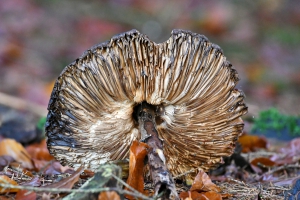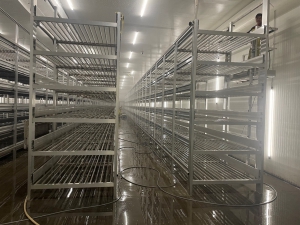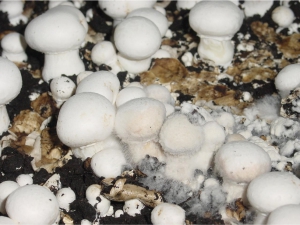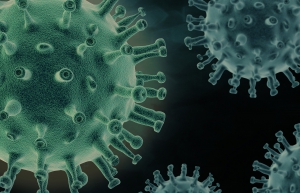Fungal Disease Awareness Week
From September 18 to 22, 2023 it's the Fungal Disease Awareness Week.
Many people are affected by fungal diseases at various times in their lives. For example, inhaling mold spores can cause diseases such as histoplasmosis, blastomycosis or valley fever.
Fungal diseases are increasing worldwide. This is due to the increase in the Earth's temperature which can allow infectious fungi in the environment to grow in new areas that were previously too cold. Changes in climate can also cause fungi to evolve, threatening the emergence of new fungal infections. For example, the Candida Auris epidemic (the hospital fungal infection!) would be the first to be caused by climate change. The fungus is known for its extreme resistance, its super-fast spread and the high mortality rate of patients who become infected with it.
Of course, not all molds are poisonous, but some molds are known to be capable of producing toxins (mycotoxins). Eating or inhaling these toxins can lead to a yeast infection.
Despite all we now know about how mold causes diseases, misdiagnoses still occur and can cost lives. Also the fact that people are increasingly becoming resistant, there are only limited available antifungal medications. This means that it is more common that fungal diseases cannot be treated.
This week should ensure that the world population becomes aware of the fact that inhaling or eating mold spores can have fatal consequences.
Source: Mushroom Matter
Hygiene at the end of the growing cycle
Lately, several farms have seen some symptoms of virus which means more focus on hygiene is necessary. Hygiene includes all measures aimed at minimizing the risk of disease and pests developing and spreading. The greatest risk of contamination from diseases and pests is at the time of filling and when the harvest starts because from that moment on several people enter the growing rooms, but there are also risks in other parts of the cultivation cycle like during emptying the grow rooms and that got forgotten on many occasions. Much of it is produced by humans and is preventable.
To reduce the chance that a few traces of diseases or insects still survive in the growing rooms after the last harvest day, it is vital to cook out the growing rooms. To ensure that all diseases and pests are killed, it is necessary to heat the entire cultivation room to 70 ° C for 12 hours by means of steam. By entire growing space is meant that the compost also reaches this temperature for 12 hours. Often, out of cost or time savings, it is chosen to shorten the time, or the temperature is kept lower, which has the risk that spores can survive. However, to be sure you kill all spores, 70 °C is the benchmark for 12 hours, especially if there are diseases or pests on your farm.
After cooking out, the new growing cycle starts, so it is important that from this moment on no traces of mushrooms, spores or flies end up in the growing area. This is often neglected during emptying, which means that the usefulness of (costly!!!) cookout has been for nothing. Therefore, when emptying, observe the following rules:
- Make sure that the people who empty the room wear clean clothes and footwear.
- Do not allow unauthorized persons when emptying.
- Always enter the cultivation area to be emptied from the outside, so not from the work corridor.
- If possible, do not pause during emptying, but only when the entire cell is empty, and the large back door is closed.
- Let the people who work at emptying not have breaks in the same area as the harvesters.
- Use only clean and sanitized material.
As soon as the growing room is empty, close the large back door as soon as possible. After this, it is important to start cleaning the growing area, shelving, and all used materials with water as quickly as possible, preferably with high pressure. Replace the spore filters, hang new fly plates to catch the first insects, and the cell is ready to be filled. If necessary, you can still disinfect the cultivation area.
Erik de Groot
Global Agriculture Services
This email address is being protected from spambots. You need JavaScript enabled to view it.
Control of Phorid flies (Megaselia halterata) in mushroom cultivation – the late summer is becoming hotter and longer
Phorid larvae (Megaselia halterata) are obligate mycelial feeders therefore, the adult flies are not attracted to oviposit in the compost until after spawning. The up to 6 mm long larvae feed on the growing mushroom mycelium but rarely on the fruiting body itself. They can be distinguished from sciarid larvae by the absence of the black head, and they develop more rapidly into a pupa.
The adult fly can be distinguished from the sciarid fly by the short antennae and by its rapid, jerky, running movement. Adult phorids act as a vector for dry bubble. 75 flies per m2 may already cause an outbreak of the disease. Phorid flies are unable to fly when the temperature falls below 12°C (54°F). In the past they have rarely infected mushroom houses after late fall. As there are now more and more warm days into November, this period is prolonged.
e-nema comes with a solution to control phorids. If you wish to know more, please visit their website.
Cobweb, still going strong
Lately I am getting a lot of phone calls again about cobweb disease. The growers see the first signs appearing at the end of the first flush and by the time the second flush is starting, the problem practically gets out of control. To beat the problem it is necessary to know where the disease is coming from and how it grows and spreads.
The cobweb mould is a soil born fungus, using a vector (taxi). The vector may be sand, dust, casing soil and all different materials used by the people on the farm. Think of brooms, shovels but also mushroom harvesting equipment. This way the spores of the fungus are transported. But the fungus does not have to reach the state of sporulation to be infectious. If the fungus is damaged is splitters like glass. Small particles of the fungus can regrow fast into a new patch of cobweb again. So only touching the fungus by hand or by watering is enough to spread it like wildfire. It grows best under warm and moist conditions. So to slow it down it will help to lower the RH in the room and to drop the temperature a bit. But it will not stop it.To stop it you will have to find the origin of the infection and stop that. Many of the infections I see at this moment seem to start during the first flush so I immediately look at the harvesting on the farm.
We make sure pickers change the gloves regularly and disinfect the knives every day. The clothes of the pickers have to be changed daily and we look at the logistics of the farm. No one is allowed to move backwards in the schedule. In other words, if you where in a second flush, never go back into the first. For the grower it means a lot of cloth changing. After every check of the rooms. On many farms it is also necessary to look at the handling of the trays. Testing showed that many of the multiple use trays are infected with moulds. Even trays that are claimed to be disinfected. An effective method is to make sure that multiple trays are staying in the room where they are used. So if they are left over after the first flush, leave them in that room and use them in the second flush. If trays are coming out of the room with a possible infection, store them separately. And not in a room with other packaging.
The best way is to carry out the disinfection yourself. Steam the incoming trays properly in a container or a room designed for steaming out. Preferably not in a cookout room because the trays will smell terribly after that. After cooking out one can use a swab test and an agar tray to see if the trays are clean enough to be allowed onto the farm.
So to eliminate this disease make a list of possible infection moments and go through the list one by one. Only this way, by taking out all possible infection points, the disease can be controlled. Because chemical control is almost impossible and most of the times not allowed. And if you see the disease it is already to late to do something. The only thing left at that moment is to cover it widespreaded with salt and to stop watering immediately. And then start eliminating it with all possible measures.
Fungi can also be deadly!
We know most fungi to be beautiful to see and a number of them are also very tasty. But that they can also be deadly proves the discovery of a rare black fungus in patients in India. Black fungus infection (Mucormyosis) has struck in this country.
The infection is caused by various fungi. These so-called mucormycetes grow in the soil, in dirt and on rotting material, including rotting leaves or wood. People get the infection by inhaling the fungal spores that float around in the air and dust. These spores get trapped in the nasal passages and sinuses and that’s what causes the disease.
Not everyone exposed to the spores will get the infection. But the increase in the number of cases in India is probably due to the disease showing up in patients who have had corona and therefore have a less immune system. A connection is also seen with the drugs used to combat Covid-19. People with diabetes would also be extra sensitive to getting the infection.
The disease infects the nerves, brain and lungs. If the fungus spreads to the brain, the risk of death is 50%. Early diagnosis can be a life saver, but even then fighting the infection will be a tough task.
























